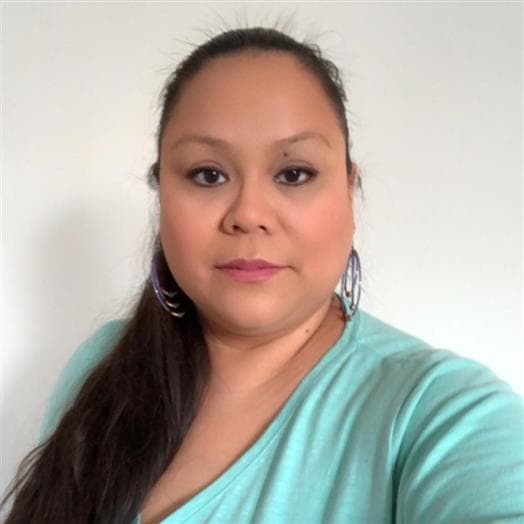Zelda Stevens’ beadwork career started on a somewhat unusual path. She was taking a course at Assiniboine Community College in Brandon, MB and dropped by one of the school’s Indigenous Cultural Centres. There, a cultural coordinator was teaching traditional beadwork. Zelda learned the basics from her and has continued on a self-taught path for the last thirteen years.
Zelda is a member of the Mosakahiken Cree Nation in Moose Lake, Manitoba. Beading helps her feel closer to her culture. “My grandma is really happy that one of her grandkids has picked up the tradition and is continuing it. I’ve taught my kids to bead too. They’re dancers for powwows and we’ve worked on a lot of their regalia for dancing.”
Beading, for Zelda, is also a form of therapy. “When I get lost in a project, I’m able to think and work through problems. Though I have to be careful − if I’ve got a problem, it can be reflected in my work. I’ve had projects get tangled up or knotted if I’m working through something. Beading also helps me retain information. Sometimes I’ll bead when I’m in class, while I’m listening to the lecture. It helps me remember.”
When designing a new project, Zelda gets inspiration from colours and from the beads themselves. “A lot of my work is in creating custom medallions. I work with a client and talk about the type of beads they want, how big they want the piece to be and how they want it to look. I’ll design both in my head and then on the computer – using it to draft the pattern. For the Petro-Canada logo, having the pattern was important, particularly for the lettering – lettering is hard to do because you have to be really precise and the beads all have to be the same size.”
Zelda sees her beadwork as a positive way to share her culture. “My beadwork is open to everyone. You should be comfortable wearing it as well as sharing the background of where it came from, and who created it.” She is surprised when more people don’t know about Indigenous culture and history. “When I was taking my course in addiction and community service, there was no native history integrated into my course. So the instructors had to incorporate it themselves. Our history is important in understanding Indigenous addiction. By understanding what Indigenous people have endured, addiction counselors are better able to help.”
Understanding what Indigenous people have endured is also essential for reconciliation.
Zelda encourages Canadians (individuals and corporations) to take additional steps towards reconciliation, in addition to appreciating Indigenous art like beadwork. “Take the opportunity to attend a ceremony like a Sun Dance. You would gain a lot and really be able to connect with Indigenous culture. It’s one thing to display art, but another thing to participate and learn.”





